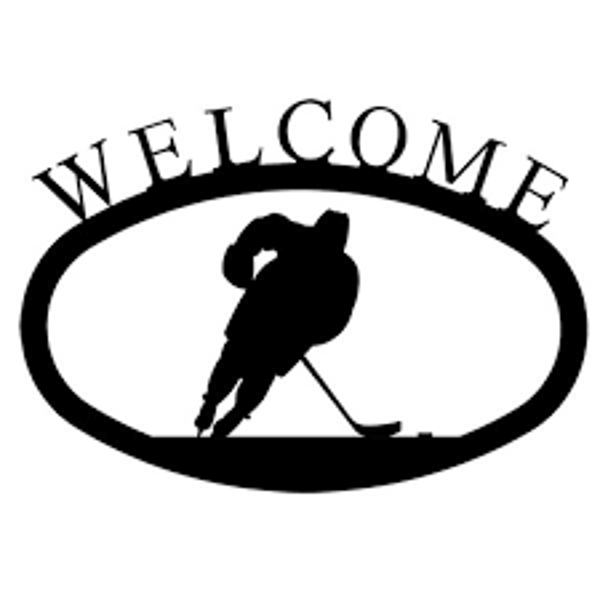

In field hockey, a 16 yard hit is a free hit for the defending team after an opposition player commits a foul within the striking circle or hits the ball over the backline. That rule was removed in 2015 and many pitches no longer feature the dotted line, as it is no longer an international requirement. The dotted line used to dictate the point where free hits must be taken from in the event of a foul within the 'D'. On pitches with no dotted line, the penalty corner is still over if the ball travels more than 5m outside of the striking circle. The dotted line in field hockey sits 5m outside the striking circle, and if a ball travels past the dotted line during a penalty corner, that penalty corner is now over. On each sideline there is also a mark 5m from the backline, which is the Long Corner Attacker's mark. 10m is the mark from which an attacking team takes the penalty, and 5m is the mark for the closest position in which a defender may stand. These are the Penalty Corner Defender's and Attacker's marks. From the centre of the backline, there are markers at 5m and 10m in either direction. In addition to these three lines and the lines that make up the two striking circles, there are also a number of other markings on the field. The line in the centre of the field is called the half-way line, or centre line, and the two on either side are the 25 yard lines or 23 metre lines. There are three main lines drawn across a field hockey pitch, spaced 22.85m (25yd) apart along the 91.4m (100yd) sidelines, reaching from side-to-side. Hockey field dimensions in feet are as follows: Two arcs, each with a radius of 14.63m, connect the ends of this line to the backline of the hockey field. The striking circle, or penalty circle, in field hockey has a radius of 15m (16yd) and is actually a straight line with two quadrant arcs drawn at either side, to form a 'D' shape against the backline.Ī straight line measuring 3.66m (4yd) – the same width as the goalposts – is positioned parallel to the goal, 14.63m (16yd) into the pitch. The International Hockey Federation states that the last metre of run-off behind the backlines can be a different colour to the rest of the pitch if playing on artificial turf.

There must be at least 2m of run-off on either side of the field, and at least 3m of run-off at the backlines. The total area of a standard field hockey pitch is 5,027sqm, which is 1.24 acres. Hockey pitches are rectangular, with the longer edges (sidelines) measuring 91.4m long (100yd) and the shorter edges (backlines) measuring 55m wide (60yd).

#Pure edge hockey full#
The backboard runs the full 3.66m width of the goal, while the sideboards are 1.2m deep.
#Pure edge hockey professional#
Professional hockey goals also include sideboards and a backboard, which stand 46cm (1ft 6in) from the ground. The goalposts and crossbar must be white and rectangular in shape, and should be 2in (50mm) wide and 2-3in (75 mm) deep. Hockey goals are made of two upright posts, joined at the top by a horizontal crossbar, with a net positioned to catch the ball when it passes through the goalposts.

Field hockey goals must also be at least 1.2m deep at ground level and at least 0.9m deep at crossbar level. This gives the goal entrance a total area of 7.83sqm. The inner edges of the upright goalposts must be 3.66m apart. The crossbar of a field hockey goal should be 2.14m above the ground, measured from the bottom of the crossbar.


 0 kommentar(er)
0 kommentar(er)
